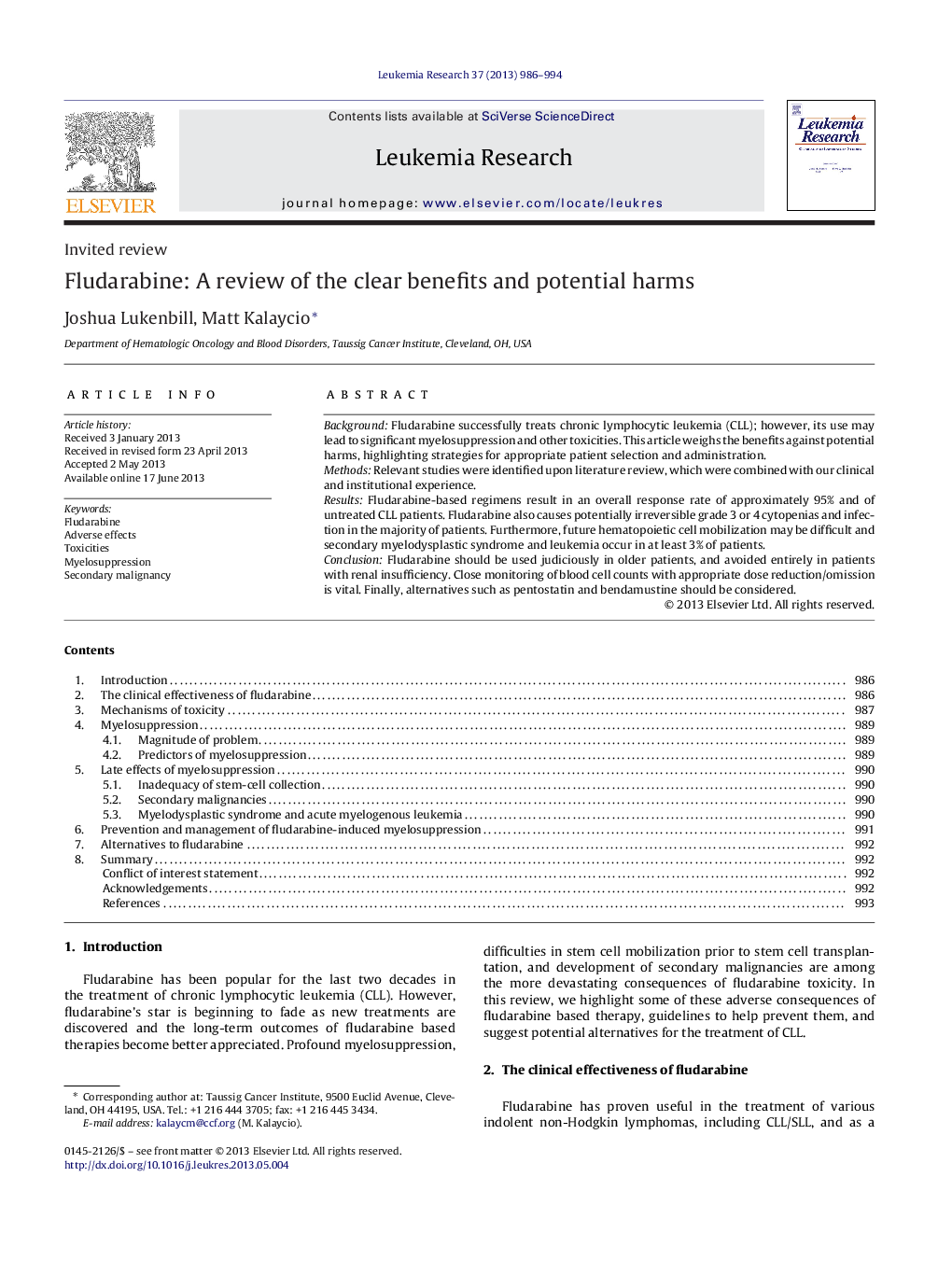| Article ID | Journal | Published Year | Pages | File Type |
|---|---|---|---|---|
| 2136807 | Leukemia Research | 2013 | 9 Pages |
BackgroundFludarabine successfully treats chronic lymphocytic leukemia (CLL); however, its use may lead to significant myelosuppression and other toxicities. This article weighs the benefits against potential harms, highlighting strategies for appropriate patient selection and administration.MethodsRelevant studies were identified upon literature review, which were combined with our clinical and institutional experience.ResultsFludarabine-based regimens result in an overall response rate of approximately 95% and of untreated CLL patients. Fludarabine also causes potentially irreversible grade 3 or 4 cytopenias and infection in the majority of patients. Furthermore, future hematopoietic cell mobilization may be difficult and secondary myelodysplastic syndrome and leukemia occur in at least 3% of patients.ConclusionFludarabine should be used judiciously in older patients, and avoided entirely in patients with renal insufficiency. Close monitoring of blood cell counts with appropriate dose reduction/omission is vital. Finally, alternatives such as pentostatin and bendamustine should be considered.
